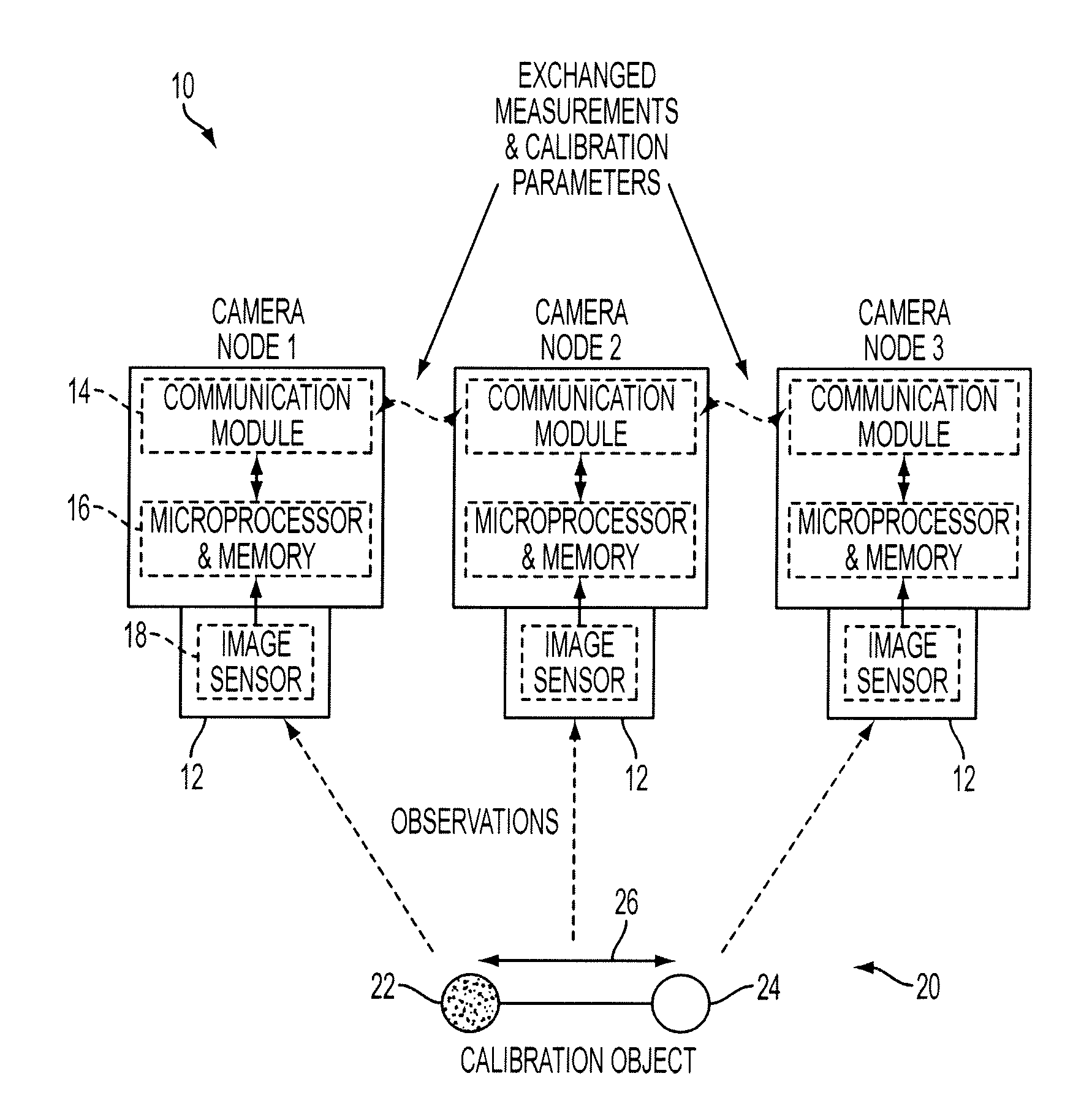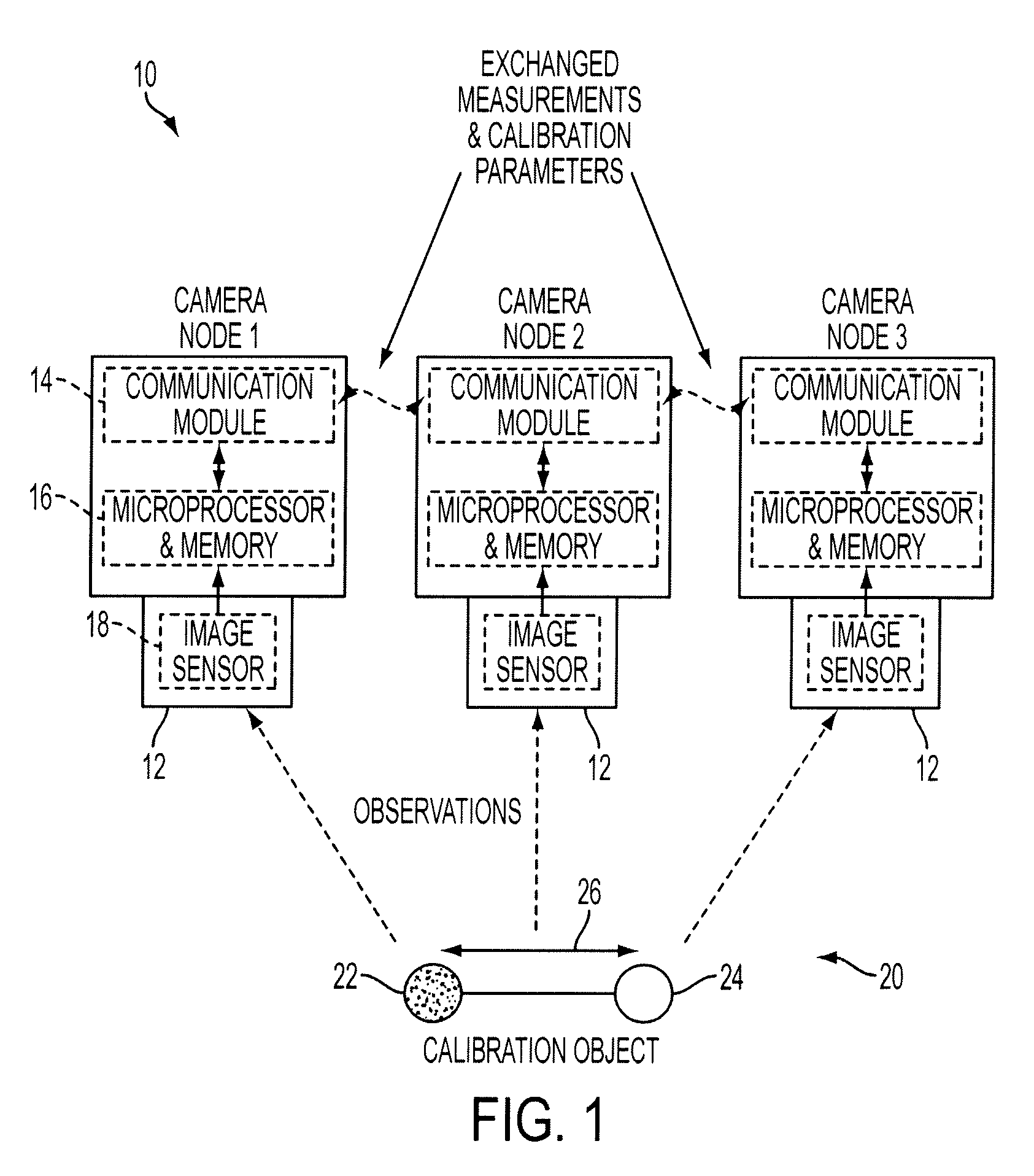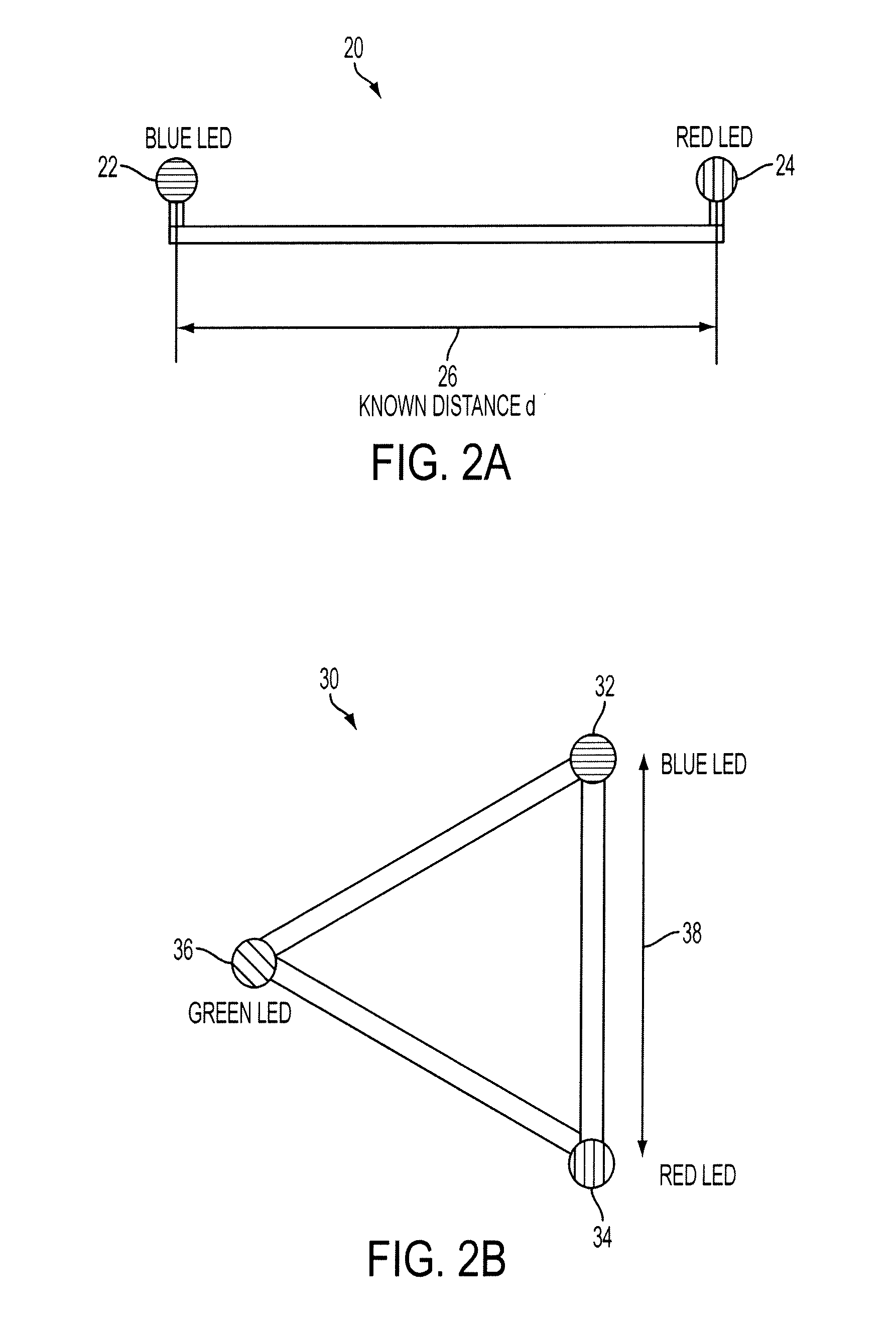Calibration of large camera networks
a directional sensor and camera network technology, applied in the field of directional sensor network calibration, can solve the problems of inability to scale to larger networks, inaccurate single processor methods, and limitations of aforementioned calibration methods, and achieve the effect of robustness of any dynamic reconfiguration and efficient calibration of a large camera network
- Summary
- Abstract
- Description
- Claims
- Application Information
AI Technical Summary
Benefits of technology
Problems solved by technology
Method used
Image
Examples
third embodiment
During this accuracy evaluation procedure (whenever a new estimate is produced), the camera node 12 may compute the total difference between the currently estimated parameters with respect to its neighbors (pti,k) and the previously estimated parameters (pt-1i,k) and compare this total difference to a predefined threshold (ε). It will be appreciated that other evaluation criterion may used to determine whether a given level of accuracy had been achieved by a camera node 12, in other embodiments. Furthermore, while the third embodiment involves the performance of the accuracy evaluation procedure by each camera node 12, it is also contemplated that each camera node 12 may transmit information to a user interface 72, which may then perform some or all of the accuracy evaluation procedure.
[0091]One advantage of this illustrative embodiment is that the accuracy evaluation step allows each individual camera node 12 to decide as to whether it has concluded its own calibration procedure. A...
fourth embodiment
[0093]The camera nodes 12 in the fourth illustrative embodiment include similar modules 40-48 to those described above with reference to FIG. 7, but further include a user interaction module 74, as illustrated in FIG. 17. The function of the user interaction module is to communicate with the user interface 72 to receive instructions regarding the calibration of the network 10 and to provide information regarding the calibration performance of one or more camera nodes 12 to the human operator 70. In some embodiments, this information may include the calibration accuracy computed for the camera node 12 by the estimate integration module 48, or some indication thereof. The process 80 performed by the user interaction module 74, in conjunction with the other module 40-48 of the camera node 12, is presented as a flowchart in FIG. 18. This interactive calibration process 80 of the fourth embodiment allows the camera nodes 12 of the network 10 to provide calibration-related feedback to the...
PUM
 Login to View More
Login to View More Abstract
Description
Claims
Application Information
 Login to View More
Login to View More - R&D
- Intellectual Property
- Life Sciences
- Materials
- Tech Scout
- Unparalleled Data Quality
- Higher Quality Content
- 60% Fewer Hallucinations
Browse by: Latest US Patents, China's latest patents, Technical Efficacy Thesaurus, Application Domain, Technology Topic, Popular Technical Reports.
© 2025 PatSnap. All rights reserved.Legal|Privacy policy|Modern Slavery Act Transparency Statement|Sitemap|About US| Contact US: help@patsnap.com



